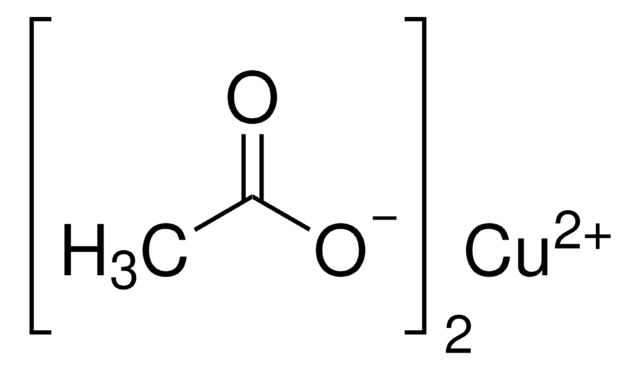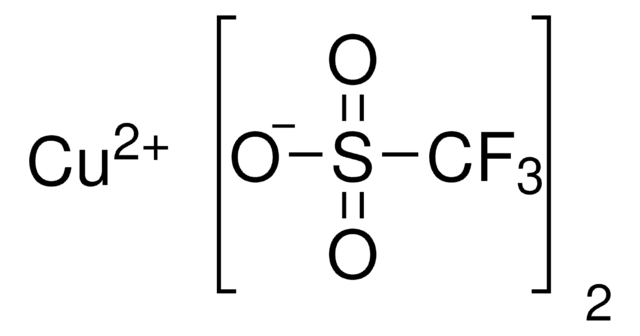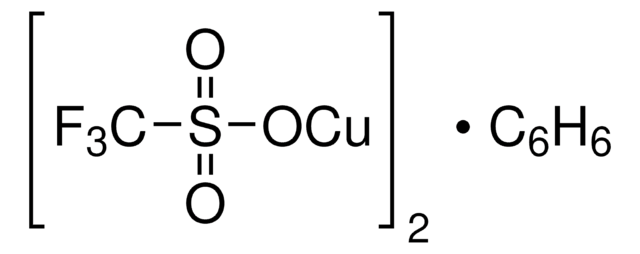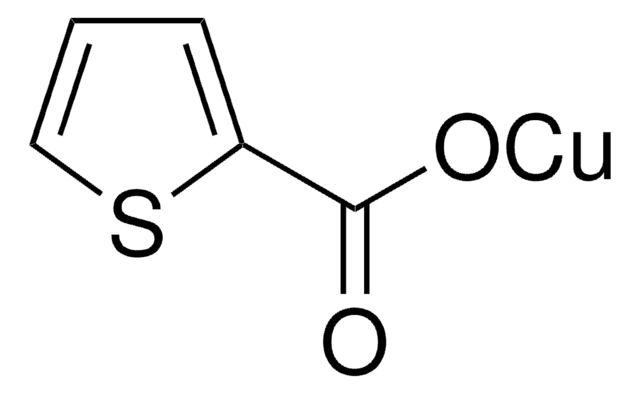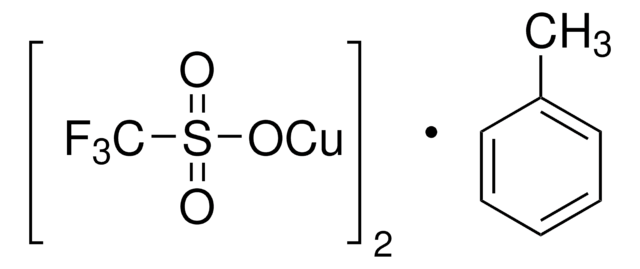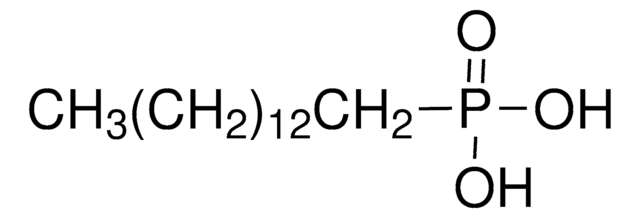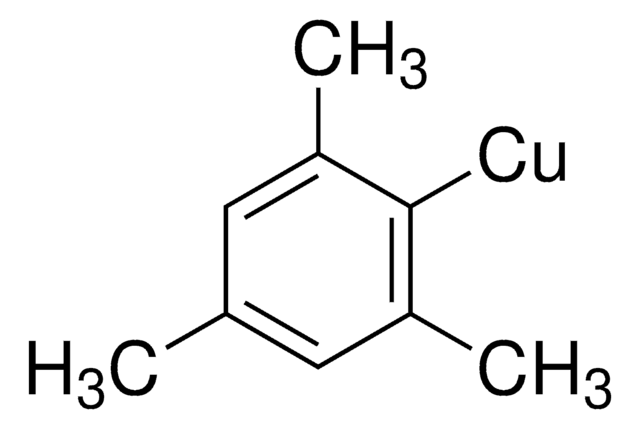403342
Copper(I) acetate
97%
Synonyme(s) :
Copper monoacetate, Cuprous acetate
About This Item
Produits recommandés
Niveau de qualité
Essai
97%
Forme
powder and chunks
Pertinence de la réaction
core: copper
reagent type: catalyst
Pf
250 °C (dec.) (lit.)
Chaîne SMILES
CC(=O)O[Cu]
InChI
1S/C2H4O2.Cu/c1-2(3)4;/h1H3,(H,3,4);/q;+1/p-1
Clé InChI
RFKZUAOAYVHBOY-UHFFFAOYSA-M
Application
Code de la classe de stockage
11 - Combustible Solids
Classe de danger pour l'eau (WGK)
WGK 3
Point d'éclair (°F)
Not applicable
Point d'éclair (°C)
Not applicable
Équipement de protection individuelle
dust mask type N95 (US), Eyeshields, Gloves
Faites votre choix parmi les versions les plus récentes :
Déjà en possession de ce produit ?
Retrouvez la documentation relative aux produits que vous avez récemment achetés dans la Bibliothèque de documents.
Les clients ont également consulté
Articles
Copper metal deposition processes are an essential tool for depositing interconnects used in microelectronic applications, giving group 11 (coinage metals: Copper, Silver, and Gold) an important place in atomic layer deposition (ALD) process development.
Notre équipe de scientifiques dispose d'une expérience dans tous les secteurs de la recherche, notamment en sciences de la vie, science des matériaux, synthèse chimique, chromatographie, analyse et dans de nombreux autres domaines..
Contacter notre Service technique